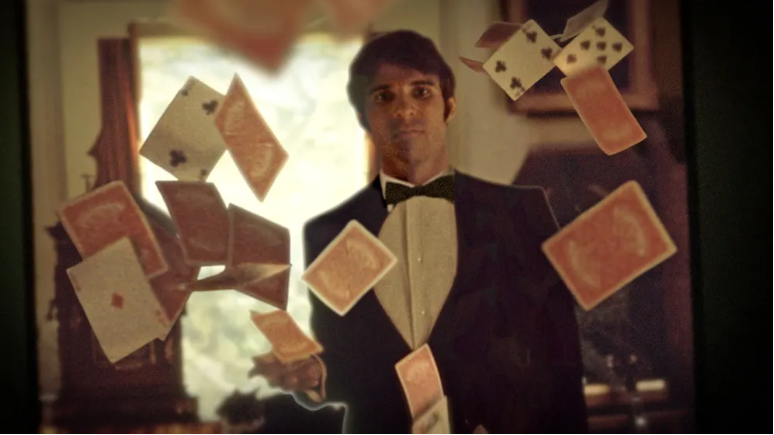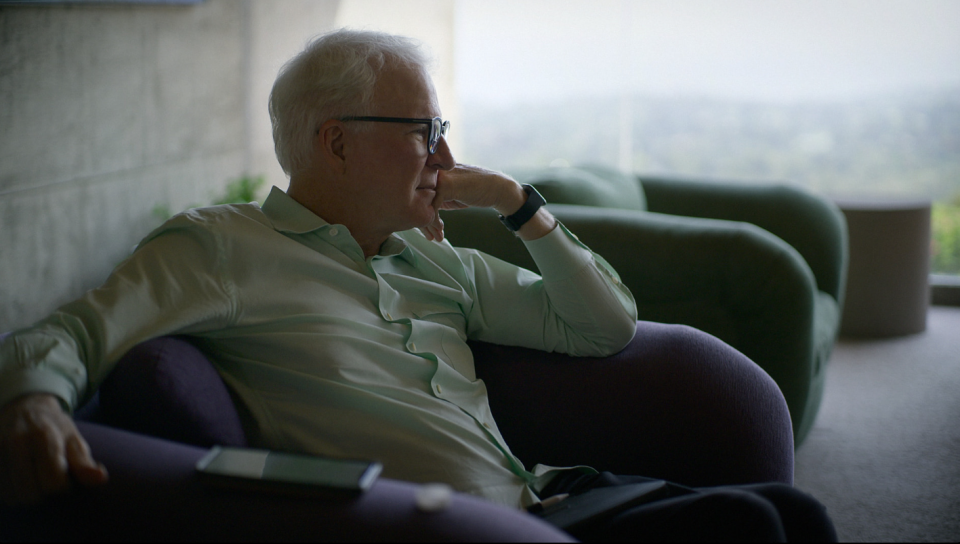‘Steve! (Martin): A Documentary in 2 Pieces’ Review: A Comedy Icon Looks Back on His Unique Legacy in Apple TV+’s Epic New Doc

- Oops!Something went wrong.Please try again later.
- Oops!Something went wrong.Please try again later.
- Oops!Something went wrong.Please try again later.
- Oops!Something went wrong.Please try again later.
Steve Martin has had so many phases in his nearly 60-year career that he’s now recognizable for at least a half dozen different projects. Younger fans who primarily him from his popular Hulu series “Only Murders in the Building” might not be aware that he once starred in multiple hit family comedies, like “Father of the Bride” or “Cheaper by the Dozen.” Others who are familiar with Martin’s extensive film work might not necessary know he’s a gifted banjo player who has frequently played with singer-songwriter Edie Brickell. But anyone born in the last three decades can be forgiven for not knowing that Martin was once the biggest stand-up comedian in America. In the ’70s, he played to enormous sold-out stadium crowds and his act became so well known that it eventually embedded itself within the American consciousness. Many if not most people of a certain age can quote a line or catchphrase of Martin’s even if it was only due to cultural osmosis.
“Then,” the first part of Morgan Neville’s two-part, three-hour-long documentary “STEVE! (martin),” chronicles his life and career up until the moment when Martin quietly and abruptly quit stand-up comedy in 1980. Neville utilizes a now too-familiar mix of archival footage, animated interstitials, and a plethora of voiceover — from Martin himself, his family and creative collaborators, and a few of his peers—to chart a path from his very humble beginnings as an young performer through his meteoric success in American comedy. Neville fleshes out the comedian’s various adolescent passions — close-up magic, the banjo, variety entertainment — as well as his more intellectual pursuits as a young adult, like philosophy and logic, to illustrate the building blocks of his unique act. Martin’s brand of “silly” humor was always built upon a strong creative and intellectual foundation with firm roots in deconstructionism as well as classic showbiz panache.
More from IndieWire
Many archival-footage documentaries tend to coast on the material at their disposal, treating curation and editing as a secondary concern compared to the nostalgia of seeing a younger version of a well-known figure. While “Then” certainly gets a lot of mileage out of Martin being one of the most filmed and photographed stars of his time, Neville admirably demonstrates why it’s important to actually witness this comedian’s development. Martin repeatedly states that his comedy didn’t land well with people for many years, and “Then” spends quite a bit of time documenting his struggle to connect with general audiences. The problem was, ha ha, a sense of timing: a self-aware generation conversant in the history of entertainment had not yet come of age, so the irony baked in Martin’s brand of “aggressive stupidity,” per fellow comic Martin Mull, was treated as nothing more than the slapdash work of an amateur.
Martin didn’t tailor his offbeat act to fit specific crowds or different venues (though he did don long hair for a period to fit with “the times”). He honed his style and elevated certain elements over time, but his humor remained more or less in the same register for years before audiences caught up with it. “Then” emphasizes the sheer befuddlement towards Martin’s act not only because it’s the historical record but also because it reflects the difficulty of translating Martin’s comedy for younger contemporary audiences. There’s a corny quality to a lot of his characters and bits that genuinely requires some context in order to fully appreciate, i.e., Martin was often sending up the codified behavior of stage performers from a different era. His manic physicality and his general pompousness represent a parody of a traditional showbiz personality, which he then infused with an absurdist sensibility that didn’t telegraph punchlines. His use of props, like balloon animals, were funny in their own right, but they also communicated the desperation behind every stage performer to entertain audiences at all costs. “His act was not comedy,” says “New Yorker” staff writer Adam Gopnik in voiceover. “It was about the absurdity of performing and the ridiculousness of people standing up in front of other people being funny.”
Much of the material and insights featured in “Then” are well-worn territory, especially to anyone who has read Martin’s memoir “Born Standing Up,” which documents the same period. However, there is some value in actually watching how omnipresent Martin’s act became in America near the close of the ’70s. Catchphrases like “Excuse me!” or the image of a guy with a fake arrow through his head seeped into everything from advertising to amateur talent shows. Martin’s jokes eventually became something closer to kitsch, which indicated that his whole conceptual act had become stale, or in his mind, complete. It gave the comedian permission to retire it completely, and he wouldn’t perform comedy on stage for 35 years.
While “Then” traces a hyper-specific show-business arc the likes of which we’ll probably never see again, “Now” picks up with Martin in the present day as he prepares for a stage show with Martin Short and places the finishing touches on his illustrated memoir “Number One Is Walking: My Life in the Movies and Other Diversions.” Neville alternates between a verité style while filming Martin at work and a more traditional celebrity documentary mode, complete with talking-head interviews from people like Lorne Michaels, Tina Fey, and Martin’s wife, Anne Stringfield. He intersperses clips from his films, various promotion appearances, and contemporary B-roll of Martin biking, hanging out with fellow comedian Martin Short, and generally enjoying life.

Martin’s affable charm and general charisma go a long way to making “Now” generally watchable. It’s plainly enjoyable, for example, to watch him and fellow comedian Martin Short run through jokes for an upcoming stage show and then, later, hang out in Los Angeles. The structure of “Now,” however, leaves something to be desired. It ping pongs across four decades of Martin’s life, detailing his post-“The Jerk” film career, his music career, his art collection, his feelings about his parents, and his current family life. Amidst this dizzying amount of information, Neville draws out a narrative of a melancholic, solitary performer who spent years keeping people at a remove slowly learning to embrace vulnerability and open himself up to life outside of his career.
The portrait of Martin that he and Neville paint doesn’t feel false. If anything, it feels familiar and normal for an anxious, workaholic comedian to relax over time and discover there’s a whole world beyond performing. But “Now” doesn’t exactly serve this idea well because it has so many irons in the fire. In fact, the second part of “Steve! (Martin)” feels like five different movies in one, with the throughline of Martin in the present day not being strong enough to keep everything in balance. It also feels formally confused: sometimes it operates like an extension of the style in “Then” and other times it resembles a traditional celebrity doc. Plus, much of “Now” feels like Neville is running down a memory-lane checklist. It’s nice to see Martin wear the “¡Three Amigos!” jacket again or see him choke up thinking about John Candy, but it’s not communicating anything about Martin that we don’t already know.
“Now” fares better when it focuses on Martin’s numerous disappointments with his film career, such as the undeserved commercial failure of “Pennies from Heaven” or how the critical drubbing that “Mixed Nuts” received sparked an existential crisis, and his eventual reconciliation with his hard-ass father. Both “Then” and “Now” go down smoothly enough to watch at home, but it’s only “Then” that captures a specific moment in American culture crucial for any young comedy nerds to learn about. At one point, this “wild and crazy guy” was so beloved that full crowds would follow him out into the streets after shows just so they could still be in his presence. Steve Martin was comedy’s Taylor Swift up until the minute he consciously decided to stop so he could try on many other different hats, which is as big a creative risk as anyone in show business has ever taken.
Grade: B-
“Steve! (Martin): A Documentary in 2 Pieces” will be available to stream on Apple TV+ starting Friday, March 29.
Best of IndieWire
Sign up for Indiewire's Newsletter. For the latest news, follow us on Facebook, Twitter, and Instagram.

